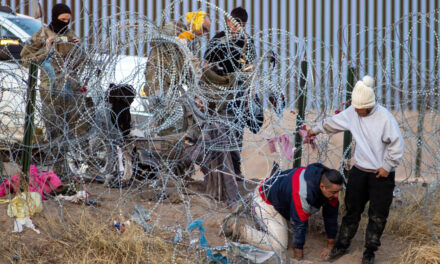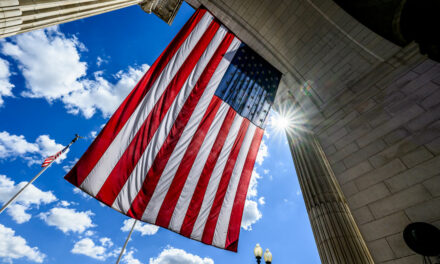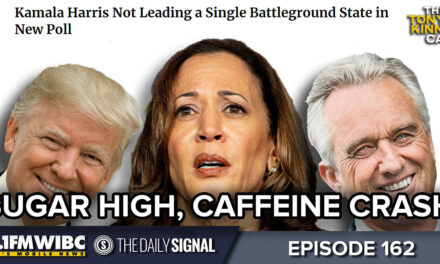We support our Publishers and Content Creators. You can view this story on their website by CLICKING HERE.
Editor’s note: This is a lightly edited transcript of the accompanying video from professor Peter St. Onge.
Small-business bankruptcies are up 61% on the year. It is a cackle-nomics miracle.
The data comes from bankruptcy analyst Epiq, which reports that commercial filings for Chapter 11 bankruptcies soared to 4,553 so far this year.
Meanwhile, total corporate bankruptcies are also rising, hitting the highest since the COVID-19 pandemic, according to S&P Global Market Intelligence, which is hitting especially hard in retail, with a parade of chains going under this year, including Red Lobster and its beloved endless shrimp. Never forget what they have taken from us.
What’s causing it? Simple: Inflation, high interest costs, and COVID-19 loans.
Inflation, of course, drives up business costs to the point they have to hike prices, which chases consumers out.
High interest rates are well-known to strangle business. In fact, that’s why the Fed does them, to strangle household spending enough that federal spending has inflation all to itself.
And then the COVID-19 loans: During the pandemic, the Small Business Administration pumped out 4 million loans—worth about $380 billion—in so-called economic-injury disaster loans. Note these were separate from the Paycheck Protection Program loans, where $800 billion were handed out to bribe voters into lockdowns.
While many of the PPP loans were fraudulent—actually, most of them, according to NPR—96% of those loans were forgiven.
Incidentally, one gang member recently killed in a Baltimore shootout had, it turned out, an outstanding PPP loan for a nanotech company. Not a joke.
Thing is, those $380 billion in injury loans actually do have to be paid back.
And it turns out a lot of companies can’t. Eighty percent are still outstanding—$300 billion—so, we’re probably just seeing the tip of the injury-loan bankruptcies.
Alas, it’s not just small business. Inflation and high rates strangle everybody. According to the American Bankruptcy Institute, total corporate bankruptcies jumped 34% on the year, while corporate bankruptcies year-to-date just hit the highest level since 2010, when we were still crawling out of the 2008 crisis.
By the way, that exceeds bankruptcies during the height of COVID-19.
As you’d expect, the worst-hit were consumer discretionary spending—restaurants, hotels, clothing, and media. In other words, stuff you don’t need. Which is pretty much how recessions work. We’ve already had 17 restaurant chains go under so far this year, including Red Lobster, Rubio’s, Tijuana Flats, and even the World of Beer.
Never forget what else they have taken from us.
Finally, individual bankruptcies. These, too, are soaring: up 15% on the year. Concerningly, they’re actually rising faster for millennials in their 20s, who are carrying $1.1 trillion in debt despite being—what?—five years out of school.
Here, the main culprit has been high interest rates: The average credit card is now charging over 22%, so the debt snowballs to where even minimum payments become a challenge. That debt becomes a ball and chain for life.
So, what’s next?
The good news—for bankruptcies, anyway—is that the Fed just panic-slashed rates, with current projections putting them cutting another 2 points in the next 12 months.
The bad news, of course, is why they’re panic-slashing—namely, because recession is coming like a tidal wave. So, sure, interest costs will go down. But if consumers dry up—or lose their jobs—they’re not going to Red Lobster.
A new episode of the Peter St. Onge podcast just dropped, rounding up all the week’s top stories. Check it out on Spotify, Apple, YouTube, or wherever you enjoy your podcasts.
We publish a variety of perspectives. Nothing written here is to be construed as representing the views of The Daily Signal.

 Conservative
Conservative  Search
Search Trending
Trending Current News
Current News 





